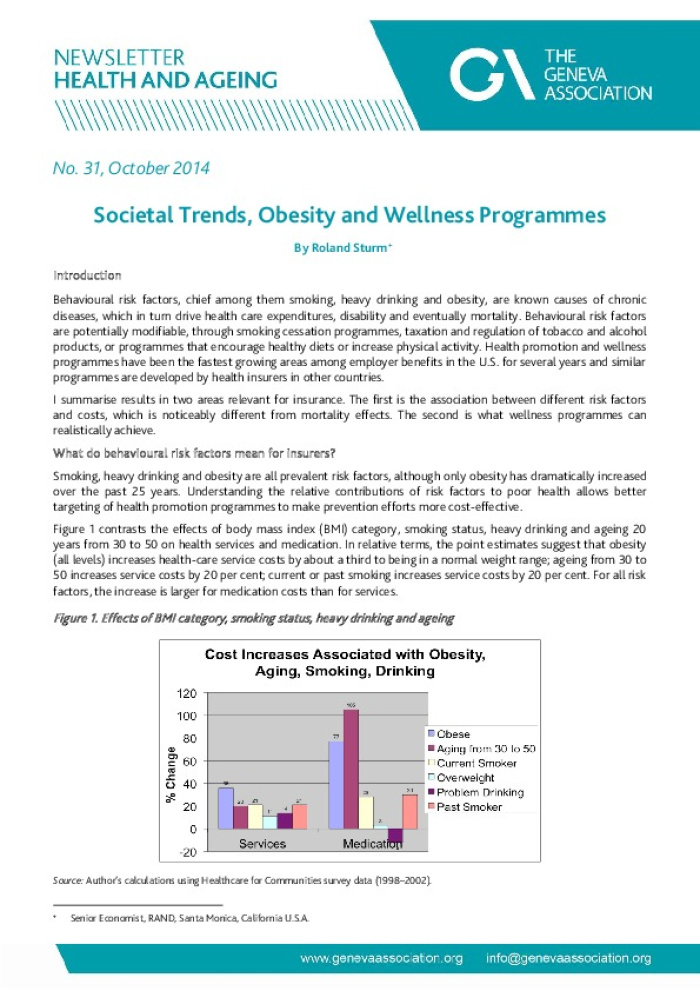Societal Trends, Obesity and Wellness Programmes
Health & Ageing Newsletter 31: Roland Sturm addresses the impact on behavioural health risks of wellness programmes that are developed among employer benefits in the U.S. and by health insurers in other countries.

No. 31, October 2014 Societal Trends, Obesity and Wellness Programmes By Roland Sturm+ Introduction Behavioural risk factors, chief among them smoking, heavy drinking and obesity, are known causes of chronic diseases, which in turn drive health care expenditures, disability and eventually mortality. Behavioural risk factors are potentially modifiable, through smoking cessation programmes, taxation and regulation of tobacco and alcohol products, or programmes that encourage healthy diets or increase physical activity. Health promotion and wellness programmes have been the fastest growing areas among employer benefits in the U.S. for several years and similar programmes are developed by health i nsurers in other countries. I summarise results in two areas relevant for insurance. The first is the association between different risk factors and costs, which is noticeably different from mortality effects. The second is what wellness programmes can re alistically achieve. What do behavioural risk factors mean for insurers? Smoking, heavy drinking and obesity are all prevalent risk factors, although only obesity has dramatically increased over the past 25 years. Understanding the relative contributions of risk factors to poor health allows better targeting of health promotion programmes to make prevention efforts more cost -effective. Figure 1 contrasts the effects of body mass index (BMI) category, smoking status, heavy drinking and ageing 20 years from 30 to 50 on health services and medication. In relative terms, the point e stimates suggest that obesity (all levels) increases health -care service costs by about a third to being in a normal weight range; ageing from 30 to 50 increases service costs by 20 per cent; current or past smoking increases service costs by 20 per cent. For all risk factors, the increase is larger for medication costs than for services. Figure 1. Effects of BMI category, smoking status, heavy drinking and ageing Source: Author?s calculation s using Healthcare for Communities survey data (1998 ?2002) . + Senior Economist, RAND, Santa Monica, California U.S.A.